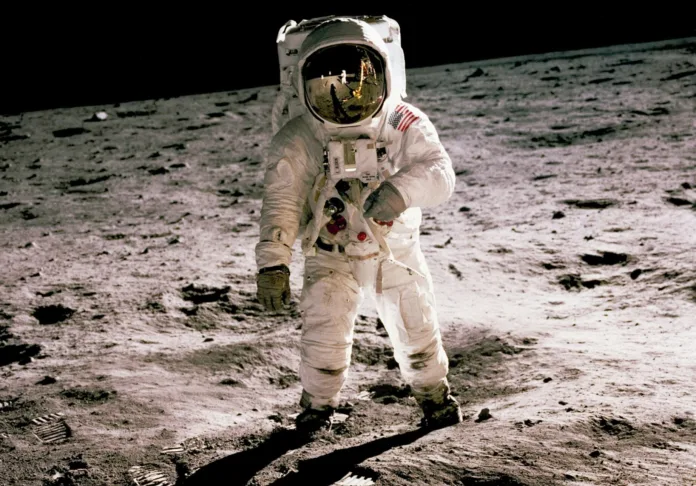After months of delays and multiple technical challenges, NASA’s Boeing starliner capsule leaves the ISS, with astronauts Suni Williams and Butch Wilmore staying until February
Boeing’s Starliner spacecraft has left the International Space Station (ISS) on a return journey to Earth without its crew of two NASA astronauts. This Starliner return without astronauts marks a significant setback for the mission, as the capsule was undocked from the ISS on Friday, months after its planned departure and after significant technical issues during the mission.
The capsule, which launched with astronauts Suni Williams and Butch Wilmore in early June, was initially expected to return just a week after reaching the ISS. However, failures with the thrusters and helium leaks changed those plans. NASA ultimately decided that the Starliner was not safe enough to carry the astronauts back to Earth, leaving the capsule alone.
Embed from Getty ImagesThe Starliner autonomously left its docking port at the ISS just after 6 PM ET and is making its way to White Sands Space Harbor in New Mexico, where it is expected to land in the desert later this evening. NASA is providing a live stream of the capsule’s return.
Instead of flying back aboard the Starliner, Williams and Wilmore will remain at the ISS for the rest of the year. Their new return date is set for February 2025, when they will come back aboard the SpaceX Dragon spacecraft. The Starliner’s empty seats and blue spacesuits remain on board, along with old equipment from the station that it is carrying back to Earth.
The mission has been plagued by a series of technical issues. After Boeing’s multiple failed attempts to launch the Starliner in May and June, the spacecraft was finally successful on June 5. However, helium leaks and other problems continued to cause concern. NASA detected two helium leaks as the Starliner approached the ISS, although they ultimately determined the spacecraft was stable enough to dock.
This marked another setback in Boeing’s efforts to join SpaceX in providing NASA with a reliable orbital taxi service. Since the retirement of NASA’s space shuttles over a decade ago, the agency has relied on private companies like Boeing and SpaceX for crew transportation. While SpaceX has seen success with its Dragon spacecraft, Boeing has encountered numerous challenges, including technical failures that have delayed its missions.
Boeing’s Starliner first faced issues in 2019 during an unmanned test flight, leading the company to redo the test in 2022. That second flight revealed even more technical flaws, resulting in over $1.5 billion in repair costs. This June’s mission, intended to mark a key milestone with a Starliner return without astronauts, was Boeing’s first attempt to carry astronauts. However, the mission’s eight-day timeline stretched into three months as technical problems continued to arise.
Despite these setbacks, NASA and Boeing officials have been clear that the astronauts were never stranded and that their safety was not compromised. “We’ll come home when we’re ready,” said Steve Stich, NASA’s commercial crew program manager, in a July press conference. NASA remains optimistic about Boeing’s future missions despite the ongoing challenges.
Analysis
Political: Boeing’s repeated technical setbacks raise questions about the U.S. government’s reliance on private companies to manage critical space missions. The partnership between NASA and private firms like Boeing and SpaceX is central to U.S. space policy, aiming to reduce costs and increase efficiency in space exploration. However, Boeing’s ongoing difficulties in delivering a safe and reliable crew capsule, despite significant federal investment, could prompt policymakers to reconsider the balance between public and private sector responsibilities in space missions. With SpaceX having already proven its capability with the Dragon spacecraft, political discussions may arise around Boeing’s continued role in NASA’s crewed missions, especially given the cost and delays.
Social: The Starliner’s delays and technical issues have sparked broader debates about safety in the context of human spaceflight. NASA’s decision to keep astronauts Suni Williams and Butch Wilmore on the ISS rather than risk their return aboard a malfunctioning spacecraft highlights the agency’s commitment to astronaut safety. Socially, this event serves as a reminder of the inherent risks involved in space exploration and the complex challenges faced by the engineers and astronauts involved. Additionally, the public’s growing interest in commercial space travel makes these discussions even more relevant as private companies aim to offer spaceflight services to non-professionals.
Racial: While this particular mission does not directly involve racial aspects, NASA’s increasing focus on diversity and inclusion in its astronaut program is worth considering. The agency has made efforts to ensure that future missions, such as those to the Moon and Mars, include astronauts from diverse backgrounds. As space exploration becomes more accessible through commercial partnerships, ensuring that these opportunities are equitably distributed will remain a key issue in future missions.
Gender: NASA has prioritized gender representation in its astronaut program, and Suni Williams, a veteran astronaut, serves as a strong example of the agency’s commitment to promoting women in space exploration. The decision to extend her stay on the ISS rather than risk her return aboard a flawed spacecraft reflects the agency’s broader efforts to ensure the safety of all its astronauts, regardless of gender. As more women take on leadership roles in space missions, this event underscores the importance of maintaining rigorous safety standards to protect all astronauts.
Economic Perspective: Boeing’s ongoing challenges with the Starliner have had significant financial implications, both for the company and for NASA. The repeated technical failures have cost Boeing more than $1.5 billion in repairs, raising questions about the sustainability of its role as a NASA contractor. In contrast, SpaceX has seen success with its Dragon spacecraft, positioning itself as a more reliable and cost-effective partner for NASA. Boeing’s struggles could have broader economic implications, potentially affecting its standing in future government contracts and the overall competition between aerospace companies. Additionally, the delays and technical setbacks have financial consequences for NASA, which has invested heavily in Boeing’s success.
